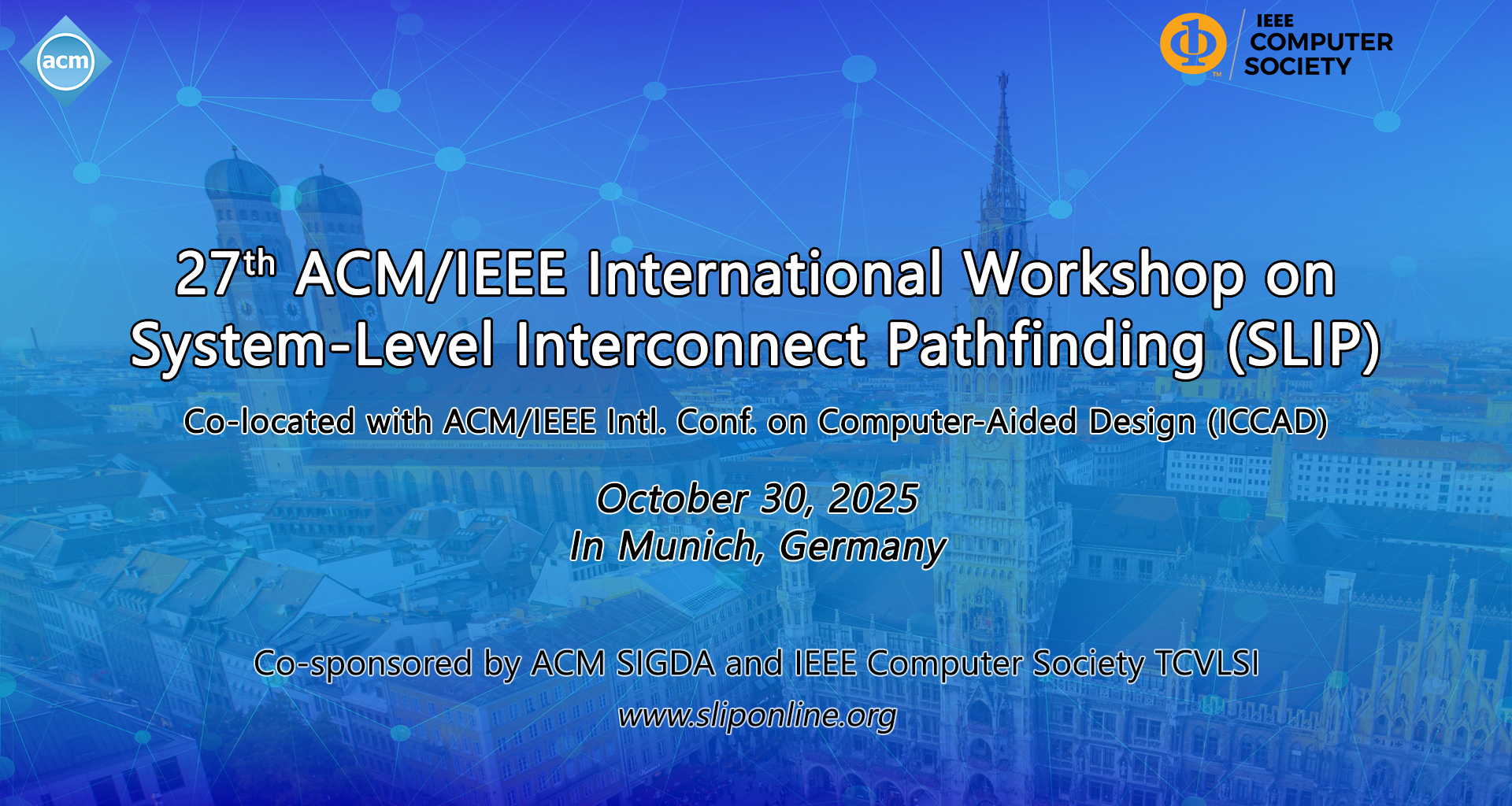

The 2025 ACM/IEEE International Workshop on System-Level Interconnect Pathfinding (SLIP) is the 27th edition of the Workshop. Technical topics include but are not limited to:
2025 SLIP is the 27th edition of the Workshop. SLIP will bring together researchers and practitioners who have a shared interest in the challenges and futures of system-level interconnect that span system, application, design, and technology.
The technical goal of the workshop is to identify fundamental problems, and foster new pathfinding of design, analysis, and optimization of system-level interconnects with emphasis on system-level interconnect modeling and pathfinding, STCO/DTCO-enhanced interconnect fabrics, memory and processor communication links, novel dataflow mapping for machine learning, 2.5/3D architectures, backside metallization, and new fabrics for the beyond-Moore era.
SLIP, co-located with ICCAD 2025, will bring together researchers and practitioners who have a shared interest in the challenges and futures of system-level interconnect, coming from wide-ranging backgrounds that span system, application, design and technology.
TECHNICAL TOPICS